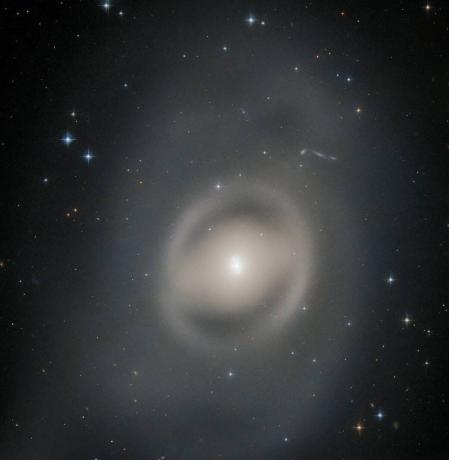Galaxy NGC 6684, a lenticular formation about 44 million light-years from Earth, showed its ghostly nature through the lens of the Hubble Space Telescope.
Operated in collaboration between NASA and ESA, Hubble turned its sights on this mysterious galaxy as part of an observation program focused on the various cosmic formations.
see more
ChatGPT creator reveals his plan if AI rebels against…
Project approved by the Chamber consolidates social control of education
Located in the constellation of Pavo, which means "peacock" in Latin, NGC 6684 is a distant and captivating presence in the sky, almost unlikely to be seen.
This constellation, along with three others – Grus, Tucana and Phoenix –, make up a celestial group known as the “Birds of the South”.
And it is precisely in this celestial setting in the southern hemisphere that NGC 6684 exhibits its enigmatic shape, standing out as a galaxy that arouses curiosity. of observers of the cosmos.
Galaxy that had not yet been seen by Hubble
The Hubble Space Telescope, a flagship collaboration between two prominent space agencies, has unlocked this vision. impressive, allowing scientists and space enthusiasts to explore the complexities of the discovery and its features unique.
Through this relentless quest to understand neighboring galactic formations, the image of NGC 6684 joins the vast repertoire of celestial discoveries captured by Hubble, fueling our understanding of the cosmos and its wonders distant.
Lenticular galaxies are characterized by having a wide disc, however, they do not exhibit remarkable spiral arms, as in classical spiral galaxies.
This peculiar format places them in an intermediate position between spiral and elliptical galaxies, giving them a diffuse and evanescent appearance, which evokes the image of a lens.

(Image: ESA Hubble & NASA, R. tully)
One of the distinguishing elements of this galaxy is the presence of extensive dark lanes of dust that intertwine with other galactic structures, further amplifying their enigmatic aura and supernatural.
This image was composed using data collected by the Advanced Camera for Surveys, a Hubble device.
This data collection took place as part of a broad observational effort that aims to cover all galaxies located at a distance of up to 10 megaparsecs from Earth, equivalent to about 32.6 million light-years.
Its objective is to carry out a detailed census of the galaxies that reside in our cosmic neighborhood. Prior to the start of this program, Hubble had focused its attention on approximately 75% of the galaxies that fell within the established limit of 10 megaparsecs.
To achieve complete coverage, additional observations are needed on at least another 153 targets.
Through this strategy, Hubble aims to complete the nearby “galactic picture” picture by capturing and documenting all the potent galactic presences within our reach.
At Trezeme Digital, we understand the importance of effective communication. We know every word matters, so we strive to deliver content that is relevant, engaging, and personalized to meet your needs.
